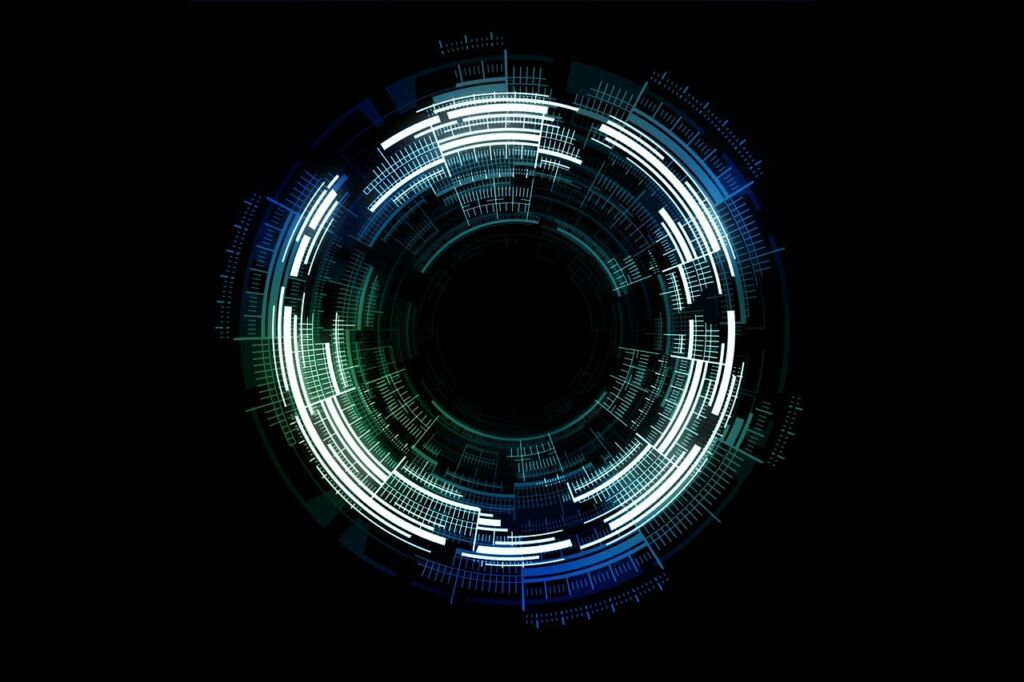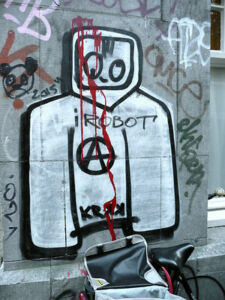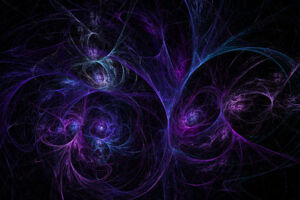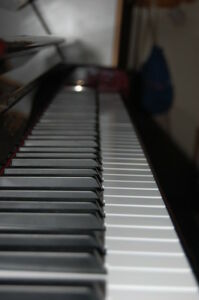How far has AI come though? Can it write original material and pay tribute to those distant authors who inspired its development? Or is that still a distant dream?
The Origins of AI

The development of Artificial Intelligence in recent years is something rarely out of the public eye. AI is a subject embedded deep within our collective consciousness, and one that has its roots in speculative fiction.
For fans of Science Fiction, AI is a familiar topic. Stories featuring artificial intelligent beings can be found as far back as Mary Shelley’s Frankenstein, and in many stories since. The volume and evolution really increases, however, In the Twentieth Century. Czech author Karel Čapek penned Rossum’s Universal Robots in 1920, and introduced the world to the word robot – a word and concept familiar to almost everyone today.
By the mid-twentieth century, giants of Science Fiction such as Ray Bradbury, Isaac Asimov, and Arthur C. Clarke were all writing about AI in various forms. At the time, such things were entirely theoretical, but many of those authors were not only writers, but also scientists. That may explain why some of their ideas in fiction have translated into real-world news stories. Except for the ones where robots take over the world. That hasn’t happened.
At least not yet.
Speculative fiction may have led the way in bringing AI to the public consciousness, but Hollywood wasn’t far behind. It began with black and white B-movies, but soon translated into box office success, such as 1951’s The Day The Earth Stood Still. Since then, Hollywood’s preoccupation with AI hasn’t faded – quite possibly because the public’s fascination in AI hasn’t faded. AI characters from film and TV are known by most people you meet in the street. Whether it’s HAL, Holly, the replicants of Blade Runner, Deep Thought, or the dystopian Terminators, most people know at least a few examples. But, while these are all examples of AI, the term encompasses far more in its current usage.
What Is AI?
Just exactly what constitutes AI is difficult to define. The definition will naturally change over time as each successive generation of complex software builds upon the previous generation. “Intelligence demonstrated by a machine” is the definition at the root of AI, but judging where complex software ends and intelligent machine begins is far from straightforward.
Skynet, HAL, and the rest are still included in the definition of AI, but the bar is far lower today. Complex search engines, such as Google, are considered to be AI, as are the recommendation algorithms of Amazon. Self-driving cars are another example of AI, and so too are speech recognition tools such as Siri and Alexa. There are earlier examples, too. One particularly famous one is IBM’s supercomputer, Deep Blue, which was pitted against chess Grandmaster Garry Kasparov back in the 1990s. Chess programs have come a long way in the intervening decades, and are far more advanced than Deep Blue. AI, and what constitutes it, is an ever-shifting marker.
Contemporary AI and Creativity
 Now, more than two decades after Deep Blue’s chess showdowns with Garry Kasparov, the technology and development of AI has evolved considerably. While there is an element of creativity in planning chess moves, a modern chess program can compensate for human skill by using brute force to assess chains of possible moves and responses and then pick the best outcome. It’s undoubtedly complex, but is also essentially a processing problem. So what about other areas, like the creative arts? Can computers and AI technology create art, music, or even literature?
Now, more than two decades after Deep Blue’s chess showdowns with Garry Kasparov, the technology and development of AI has evolved considerably. While there is an element of creativity in planning chess moves, a modern chess program can compensate for human skill by using brute force to assess chains of possible moves and responses and then pick the best outcome. It’s undoubtedly complex, but is also essentially a processing problem. So what about other areas, like the creative arts? Can computers and AI technology create art, music, or even literature?
AI and Music
 Moving from brute force processing to creativity is a big leap, and music is a good place to start. Of all the creative arts, music is the natural first step. Music is, in essence, maths in motion. There is infinite complexity, but the most common building blocks – at least in traditional western music – are grounded in maths. For example, take a stringed instrument like a guitar and pluck an open string. If you then pluck that string again, but this time press the string to the fretboard halfway along so that the vibrating length of string is halved, something interesting happens. The second note is exactly one octave higher than the first. Not only this, but the frequency at which the string vibrates is precisely doubled. So, while an AI might not be precisely able to “hear” in the same way as humans, it can learn the rules of harmony. From there it’s a short step to machines creating original music.
Moving from brute force processing to creativity is a big leap, and music is a good place to start. Of all the creative arts, music is the natural first step. Music is, in essence, maths in motion. There is infinite complexity, but the most common building blocks – at least in traditional western music – are grounded in maths. For example, take a stringed instrument like a guitar and pluck an open string. If you then pluck that string again, but this time press the string to the fretboard halfway along so that the vibrating length of string is halved, something interesting happens. The second note is exactly one octave higher than the first. Not only this, but the frequency at which the string vibrates is precisely doubled. So, while an AI might not be precisely able to “hear” in the same way as humans, it can learn the rules of harmony. From there it’s a short step to machines creating original music.
AI Baby
Experimental composer Holly Herndon is one of those at the forefront of using AI creatively. Her 2019 album, Proto, featured collaborative input from a singing AI “baby” she calls Spawn, which Herndon developed over several years with Berlin-based AI expert Jules LaPlace. And Herndon isn’t alone: others are pushing the boundaries of what’s possible when it comes to using AI creatively in the arts.
Digital Monkeys With Typewriters
 You may already be familiar with the Infinite Monkey Theorem, the theory that given an infinite amount of time a monkey hitting typewriter keys will eventually reproduce something recognisable such as the works of Shakespeare. There’s a solid argument to be made that AI is already a step ahead of our theoretical monkey though. Writers are already working with machine learning algorithms to emulate an author’s style, similar to an AI that learned to paint in the style of Raphael. Google’s Tensor Flow is just one of the open-source libraries for machine learning and AI. There are already a lot of these “Deep Learning” frameworks and applications out there, and people are finding more and more uses for them.
You may already be familiar with the Infinite Monkey Theorem, the theory that given an infinite amount of time a monkey hitting typewriter keys will eventually reproduce something recognisable such as the works of Shakespeare. There’s a solid argument to be made that AI is already a step ahead of our theoretical monkey though. Writers are already working with machine learning algorithms to emulate an author’s style, similar to an AI that learned to paint in the style of Raphael. Google’s Tensor Flow is just one of the open-source libraries for machine learning and AI. There are already a lot of these “Deep Learning” frameworks and applications out there, and people are finding more and more uses for them.
Who knows, it could be the next great novel of the century won’t be produced by a human, but an AI. Once such a statement might have sounded ridiculous, but machine learning has already affected the development of word processors without us ever really noticing. One thing is certain, recent advances in AI show us that there will be plenty more innovations in the coming years as the use and development of AI continues.
Artificial intelligence and machine learning is already having a large impact on grammar and spell checkers – and to read further please see How Machine Learning is Vastly Improving Word Processing Programs





[…] the possibilities technology offers for your story – perhaps you can bring a new twist to the evolution of AI in your story world, for example, and give the reader something less clichéd than the standard SF […]